Sometimes the best option for heating a home is electric convector heaters
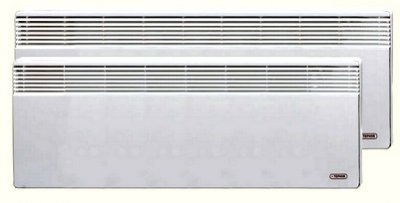
A convector is a device for heating rooms.
The name comes from the way it is designed and works - based on the principle of natural convection.
The device passes air through itself, heating it.
Content
Electric heating convectors: what are they

This type is the most popular. The device operates from the mains, quickly provides a comfortable temperature, does not dry out the air.
At the same time, compared to alternative heaters, it is quite economical and lightweight in use.
The electric convector is designed extremely simply. As a rule, it has a rectangular shape, inside the body there is electric heating element - TEN, which increases the temperature of the air flows passing through it.
The device can be equipped with a temperature sensor, a thermostat (thermostat). The body is usually made of light alloy metal, to reduce the weight of the device.
Operating principle
It is based on convection - natural air circulation, for which the device body is equipped with special holes. The lower ones are designed for the intake of cold streams, the upper ones (often a grille with guide curtains) are designed for the outlet of heated air into the room.
If you remember physics, cold air is heavier than warm air and is always at the bottom.
Fan and other features
Technical characteristics of convectors:
-
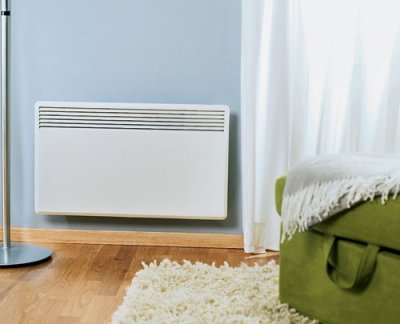
Dimensions — the simplest and most understandable characteristic. It is clear that it is impossible to fit a large box into a limited space.
That's why convectors come in different heights - high (up to 650 mm), medium (up to 330 mm), plinth (up to 22 mm). There are models of height only 105 mm.
- Power — the most important parameter determining the device's performance. The higher it is, the faster the device heats the air and the larger the area it can heat.
- Presence of a fan provides higher heat output and also increases the cost of the device. For particularly economical and undemanding users, a fan in a convector is an unnecessary detail. For the rest, it is a completely justifiable improvement.
- Moisture protection — this parameter is important if the device is installed in a room where there is excess water and it can damage electrical equipment. We are talking about swimming pools, winter gardens and other similar objects. Convectors that do not have moisture protection are installed only in dry rooms.
Advantages and disadvantages
It is not without reason that the electric convector has gained fame among consumers. It surpasses its counterparts intended for heating premises. Behind are left both classic fans, oil and spiral electric heaters, and gas convectors.
Advantages of electric convectors:
- Instant heating of the room. You bought it, installed it on the floor or hung it on the wall, plugged it into a socket and in a minute you could feel how the room was getting warmer.
- Silence during operation of the convector. In any type of device there are no parts that rub during movement (as in a fan, for example), so it does not make any sounds.
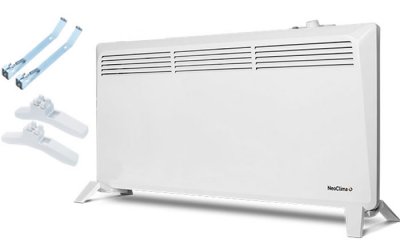
- Precise maintaining a comfortable temperature for the user. This is achieved thanks to additional equipment - a thermostat, a temperature sensor, a control unit.
- Low price. Due to its simple design, the device is cheaper than its complex analogues, especially heating boilers and radiators.
- Doesn't dry the air, thanks to the use of the convection principle and the relatively low heating temperature of the heating element - only up to +100 °CAt the same time, due to the large area of contact between the heating element and the air, the device is highly efficient.
- Safety. Convector body temperature does not exceed +65 °C, which eliminates the risk of burns upon contact with it and the possibility of fire in case of contact with flammable materials.
- Long service life - up to 20 years.
- Wide choice designer convectors, as well as by size and installation method. Aesthetic and not so, large and small, floor-standing, wall-mounted and built-in - they will "fit" into any interior.
Disadvantages of convectors:
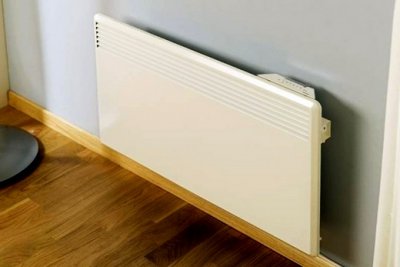
- High power consumption. But everything is relative: any devices that operate from the network consume electricity. At the same time, oil heaters, for example, are much more gluttonous than convectors.
- Impossibility of heating large area with unusually high ceilings.
- Dust Spread in the room with streams of warm air. But this drawback is a lesser evil compared to how the same electric fan blows up dust or how a spiral heater burns it. The result is a sore throat and a feeling of dryness.
How to choose the best installation location
Ideal to install a floor convector under the window. Provided that the room is well insulated and cold air enters only through the window opening. Then the warm flow cuts off the cold flow coming from the window, and the air is heated evenly. If you install the device in another place, you will get Dual-zone climate control: if it needs to be fresher, move it to the window; if it needs to be warmer, move it to the convector.
The wall convector should be hung in the same place - in the places where the radiators of the classic heating system are installed, that is, under the window sill. Since the cold air that enters the convector is below, mount the device at minimum height.
Important! You cannot install a convector directly next to a socket - the minimum distance from it should be be 10 cm. Convectors do not like drafts - the principle of convection is disrupted and the device becomes almost useless.
Approximate cost
It is good because it is relatively inexpensive. The price varies depending on the technical parameters, quality of the product and additional equipment. from 100 to 150 dollars.
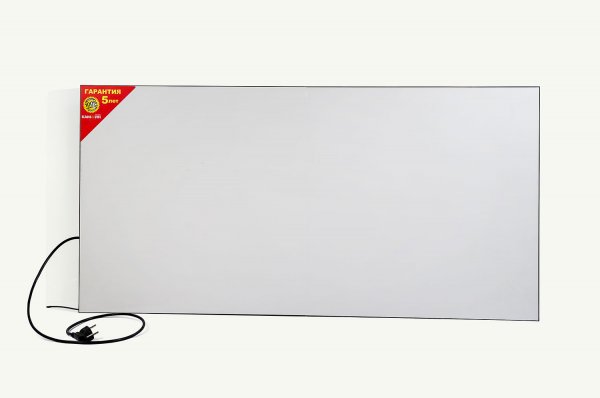
Photo 1. Ceramic electric convector model Easy Heat, power 700 W, manufacturer - Kam-in, Russia.
Of course, the principle "the better, the more expensive" does not always work. Often the cost is influenced by the country of manufacture and the brand. But it is still better to pay a little more and once, than to throw money away on disposable devices from dubious companies.
If we take into account reliable convectors from reputable manufacturers, then the price varies depending on the following criteria:
- device power;
- complexity of design;
- type of thermostat.
Types
Types:
-
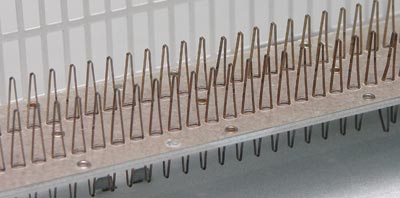
Needle-shaped They consist of a plate that does not conduct electricity, and a heating chromium-nickel thread covered with a special insulating varnish is attached to it.
Convectors with such a device heat up and cool down very quickly, but are afraid of high humidity. The most inexpensive, but the least durable.
- Tubular — is a steel tube with a stretched nichrome thread inside. The entire cavity is filled with backfill that does not conduct current, but allows heat to pass through. There are aluminum fins on the surface of the tube to increase heat transfer and the degree of convection. These heaters serve for a long time and are suitable for installation in rooms with high humidity. They are in the middle price range.
- Monolithic are superior to others in terms of design: they are the most efficient and have minimal heat loss. The nichrome thread in a one-piece housing is surrounded by a dielectric filler. In a monoblock, all elements uniformly contract and expand during heating and cooling. This eliminates the formation of microcracks. Therefore, such heating elements are very durable, but also expensive.
Division by type of thermostats
Thermostats are mechanical and electronic. Each has its own pros and cons, but the task is the same: to regulate the air temperature in the room.
Mechanical:
- It is manually adjustable and has Error of 1 °C.
- Works on the principle thermocouples, other methods of switching off the convector are also used.
- Plus mechanics - low cost.
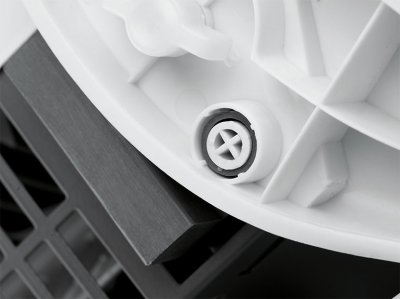
- A significant disadvantage is click when turning the device on and off. In the bedroom it can wake you up at night.
Electronic — something much more complicated:
- Configurable with control unit;
- works silently;
- the error is minimal - up to a tenth of 1 °C;
- allows you to choose modes works;
- costs significantly more expensive mechanical thermostat.
Choosing a heater for your home or apartment
We are guided by the following factors.
What room will it work in?
The most important thing here is humidity levelIf the bedroom is heated, such an option as moisture protection is not required. For a bathroom or a swimming pool, on the contrary, it is needed.
Ratio of footage to power
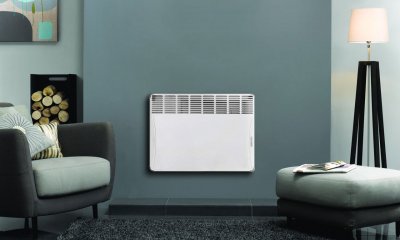
The larger the area to be heated, the more powerful the convector should be. Without going into complex calculations, let's take the standard ceiling height 2.8 m (anything above that is difficult to heat with a convector).
With this parameter for heating 10 sq. m. will be needed 1 kW power. That is, simply multiply the area of the room by 0.1 and get the required power of the device in kilowatts. For the bedroom for 12 square meters 1.2 kW is enough.
Modern design
Here you have the cards in your hands: there are many designer convectors on the market that will not spoil the interior. Rounded shapes, no sharp corners, different colors and shapes of boxes, the ability to build the convector into the floor or hang it on the wall provide ample opportunities to select the device in accordance with individual needs and taste.
Need for additional options
If comfort is more important to you than money, choose electric convectors with additional functions and equipment such as:
- Ionizer - traps dust and saturates the air with ions. It works both when the convector is on and off.
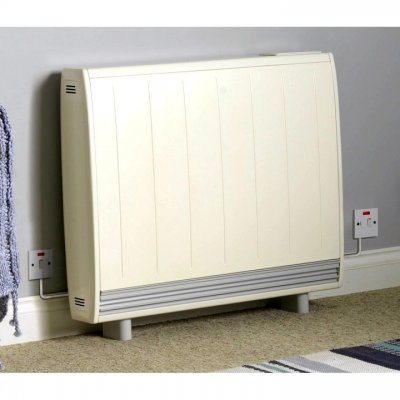
- Freeze protection - will work automatically when the room gets colder +5 °C.
- Program memory (Restart function). The convector will remember the last set parameters and set them when resuming operation after shutdown. Convenient in case of frequent power outages.
- Timer — the convector will work as long as you specify.
- Temperature and power regulation. The ability to independently set the temperature and power of the device that you consider necessary to maintain a comfortable temperature.
Useful video
Check out this video that explains the difference between heating with an electric boiler and convectors.
Neither hot nor cold
As you can see, there is nothing complicated in choosing a convector, if you have at least a general idea of what kind of device it is and how it works. Just be aware and treat this matter with full responsibility.
And first of all, pay attention to well-known and reliable brands: Noirot, Hosseven, Timberk, Neoclima, Electrolux. And only then decide on the characteristics and functions that suit you.







